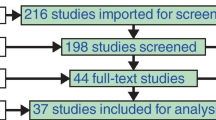Abstract
This article was conducted with an evaluation and feedback system to identify planning evaluation criteria for natural and cultural scenic areas of indigenous tribes at Taiwan. The purpose of this article was to identify the interdependencies among the environmental, economic, societal and cultural, political evaluation frameworks that a complicated eco landscape system would contain. To reduce the errors caused by personal preferences of expert group members, interpretive structure modeling (ISM) was applied for the correlations among the evaluation factors to identify the causes and effects, criteria and conditions for the problems raised by this article. A decision structure system for eco landscape planning was proposed through the application of ISM. The results of this article are presented with 12 evaluation factors, among which the factor of the culture of historical heritage (C2) is independent to the others while the remains interdepend to one another.

Similar content being viewed by others
Explore related subjects
Discover the latest articles, news and stories from top researchers in related subjects.References
Warfield JN, Staley SM (1996) Structural thinking: organizing complexity through disciplined activity. Syst Res 13(1):47–67
Hou CA (2012) Selecting criminal investigation police captain using analytic network process—a case study of Kaohsiung City Police Department (in Chinese). Master’s degree, Department of Industrial Engineering and Management, National Kaohsiung University of Applied Sciences, Kaohsiung Taiwan
Chen YM (2011) The methods of decision-making and it’s applications. Ting Mao, Taipei, Taiwan
Sage AP (1977) Methodology for large-scale systems. McGraw-Hill, New York
Warfield JN (1974) Toward interpretation of complex structural models. IEEE Trans Syst Man Cybern 4(5):405–417
Warfield JN (1974) Developing interconnection matrices in structural modeling. IEEE Trans Syst Man Cybern 4(1):81–87
Lin YY (2006) A service quality measurement architecture for hot spring hotels (in Chinese). Department of Technology Management, Chung Hua University, Hsinchu
Author information
Authors and Affiliations
Corresponding author
About this article
Cite this article
Lee, YC., Shiau, YC. & Hsu, WL. Applying interpretive structure modeling on the interactive correlations on factor analysis in natural and cultural scenic area at Taiwan. Artif Life Robotics 21, 37–42 (2016). https://doi.org/10.1007/s10015-015-0245-6
Received:
Accepted:
Published:
Issue Date:
DOI: https://doi.org/10.1007/s10015-015-0245-6




